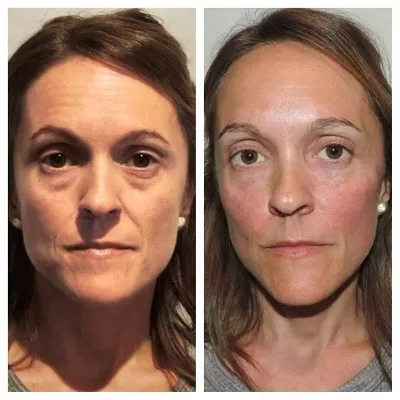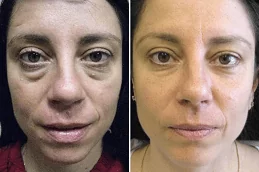What are Stem Cells?
Stem cells are primitive cells not yet endowed with specialization but capable of transforming themselves into different types of cells that make up the various tissues.
What is Stem Cell Therapy?
The Stem Cell Therapy & Treatment in Georgia & Tbilisi
is part of that new branch of medicine called regenerative medicine, which aims to replace damaged organs and tissues. In the last twenty years, the ever-deeper knowledge of stem cell biology has allowed the development of more and more innovative and targeted techniques that see the use of these cells to cure or prevent a whole series of diseases.
Results:
Results vary depending on the condition of the patient, severity of their disease. In most cases, multiple sessions are required to treat the problem.
Classification of Stem Cells:
Historically, stem cells are mainly divided into the following categories:
- Embryonic ones, which can multiply indefinitely and give rise to all cell types
- Adult stem cells, also pluripotent, whose presence remains limited to some areas such as, for example, the bone marrow, gonads, brain, epithelium, and retina.
What can Stem Cell Therapy Treat?
Currently, medicine is making progress and the list of diseases in which stem cell transplantation is a standard of treatment is constantly increasing. Here is a list of some of the conditions stem cell therapy can treat:
- Neck pain
- Injuries
- Osteoarthritis
- Heart disease
- Stroke
- Hair loss
- Leukaemia
- Anaemia
- Lymphomas
- Burns
Who is the Candidate?
Anyone looking for a non-surgical treatment for their diseases can undergo the treatment:
- Any person with osteoarthritis at an earlier stage can take the treatment
- Women looking to reduce the signs of ageing like wrinkles and sagging
- Stem cells can help you grow new hair
- People with neck or muscle pain
- People who don’t want to get a surgical facelift
The Procedure:
Thanks to their versatility, once taken from the tissues that contain them, the stem cells can be stimulated in the laboratory to grow, increase, and differentiate.
Reached an amount judged sufficient for the success of the therapeutic procedure, they can be transplanted into the patient with an intravenous injection or through more complex and aimed at concentrating the cells in a particular organ.
Through the blood, the stem cells reach the target organ, where they should settle and multiply. To date, stem cells are widely used in the haemato-oncology field to treat leukaemia and lymphomas, but their use is commonly studied in clinical trials in many other areas.
Preparation:
To get outstanding results from this Stem Cell Therapy & Treatment in Georgia & Tbilisi, you must prepare well for it. Talk to your doctor in detail about your condition and medical history so that he can assess what health complications you may have in the future. Most doctors give the following preoperative instructions before stem cell therapy and treatment:
- Avoid drinking alcohol
- Stop smoking a month before your procedure as it affects healing.
- Avoid prolonged sun exposure or sunbathing several days before your procedure.
Take a family member or friend with you to your stem cell intake so they can stay with you at all times
How are Stem Cells Administered?
There are three possible routes of injection:
- Intravenous or injection into a vein
- Intrathecal or injection into the space surrounding the spinal cord
- Intraparenchymal or direct injection into the brain and spinal cord.
Where the stem cells are injected affects their activity. Intravenous and intrathecal methods are currently the only ones used in the experimental phase to evaluate their therapeutic efficacy. Still, all types of injection could play a role as discoveries on stem cells progress.
Stem Cell Treatment FAQ’s:
What Is Stem Cell Therapy Used For?
In stem cell transplants, stem cells either replace diseased or chemotherapy-damaged cells or help the donor's immune system combat blood-related illnesses like multiple myeloma, leukemia, lymphoma, and neuroblastoma.
What Are The Side Effects Of Stem Cell Therapy?
This procedure may cause mild swelling, bruises, redness, discomfort, and injection site pain, among other side effects. Thankfully, the inflammation is short-term and subsides in three to four days. Following the procedure, you will also receive follow-up instructions to ensure a speedy and trouble-free recovery.
What Are The Pre-Instructions For Stem Cell Therapy?
Prior to stem cell therapy and treatment, avoid alcohol and smoking. Because smoking affects healing, give up a month before your procedure. A few days before your procedure, stay out of the sun and avoid prolonged sun exposure. Bring a friend or family member with you to your stem cell infusion so they can be by your side at all times.
What Are 5 Advantages Of Using Stem Cells?
You can avoid surgery and all of its risks and complications. Stem cell therapy is a non-surgical, minimally invasive procedure. It has a minimal recovery period following surgery. No general anesthesia is administered as well as no chance of being turned down. And you don’t have to worry about transmission of infectious diseases.
Is Stem Cell Therapy Safe?
Because adult stem cells are collected from the patient, there is less chance of a negative outcome, making most stem cell therapy implementing these cells safe. Temporary pain and swelling are the most frequent side effects.
Is Stem Cell Therapy Permanent?
Stem cell therapy offers long-lasting pain relief to a large number of patients. Additionally, stem cell therapy may help certain soft tissue injuries heal permanently.
Recovery:
Recovery from stem cell therapy is short and straightforward. Most patients take less than 14 days to recover from this particular procedure fully. Some side effects of this procedure may include:
- Mild swelling
- Bruising
- Redness
- Discomfort
- Pain at the injection site
But, fortunately, the inflammation is temporary and goes away within 3-4 days. You will also be given some follow-up instructions after the procedure to heal quickly and without complications.
Book an Appointment
You can book an appointment with us to get your Stem Cell Therapy in Georgia, Tbilisi
from the most competent and professional doctors at the most affordable rates by filling the form below.





